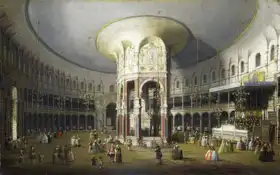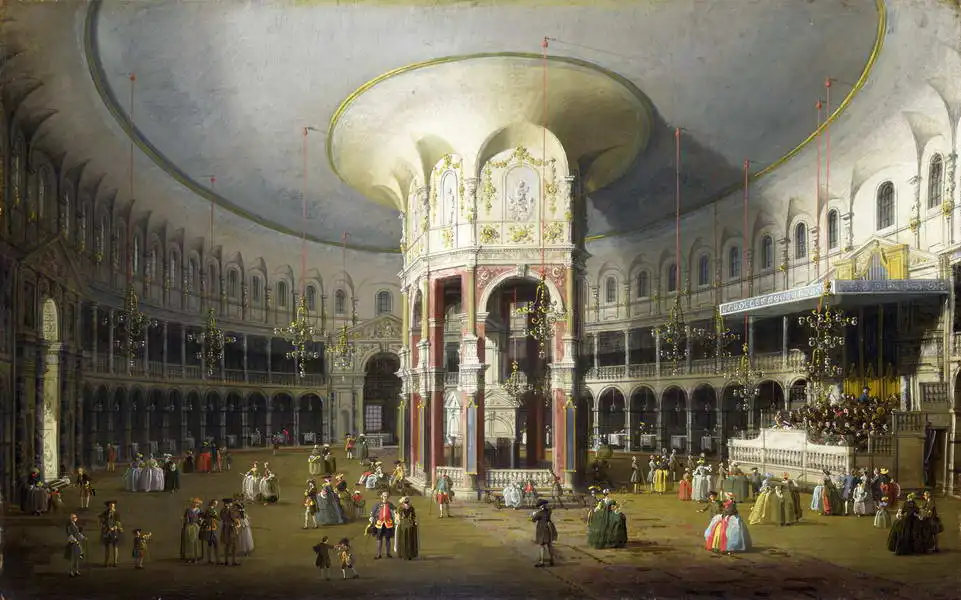About this finishing
Print. The image is printed on the top quality 10-ink HP Z9PS printer on HP matte 270 g / m2 paper. You can choose any size to an accuracy of 1 cm. A margin of 5 cm around the image is added to the size of the motif.


You can find a detailed description about our finishings
here.
Interior of the Rotunda at Ranelagh
Date:
1754The painting depicts a historic interior that looks like a palace or theatre with ornate architecture. Tall columns and arched arcades dominate the space with multiple galleries and corridors. The undulating ceiling has a central opening that resembles a dome. The painting is illuminated by numerous chandeliers. The floor depicts figures in period costumes from perhaps the 18th or 19th century, suggesting that this may be a social event or gathering. The overall atmosphere is festive and representative.
This description was created by artificial intelligence, please be indulgent.
Canaletto painted picture Interior of the Rotunda at Ranelagh in 1754. Prevailing color of this fine art print is vivid and its shape is long. This image is printed on demand - you can choose material, size and finishing.
Canaletto (1697-1681) was born in Venice. He, along with his brother, learned painting from his father. He started as a painter of theatrical backdrops. In his free time, he painted everyday urban life. When he left his father’s workshop, he went to Rome for inspiration. There, he perfected his fondness for painting architectural elements. This can be seen in the detailed
Baroque paintings of
Venice, where he captured Venice in the period of its greatest beauty and glory. Thanks to the merchant Joseph Smith, Canaletto’s paintings were sold even in England. However, in 1740, the war disrupted the market and a the flurry of British tourists traveling to Venice decreased. This prompted Canaletto to travel to London to keep his clientele. However, English critics described his work as repetitive, and he was labelled a fraud. He did not manage to fix his and so he returned to Venice, where he became a member of the Academy of Arts and painted until his death in 1768.


